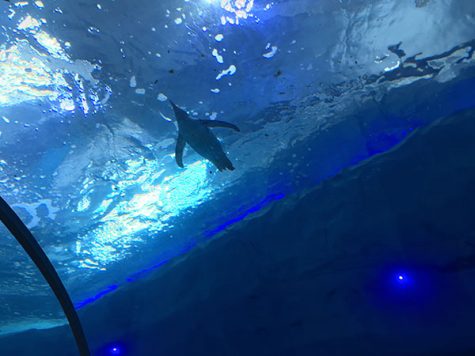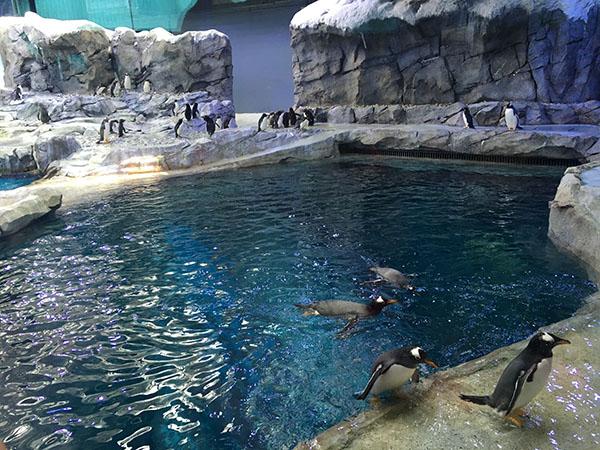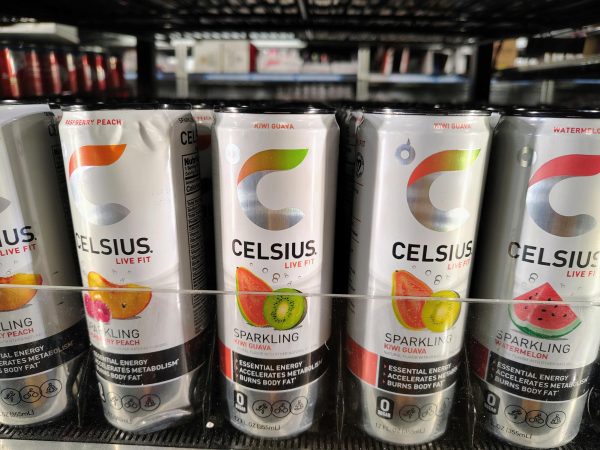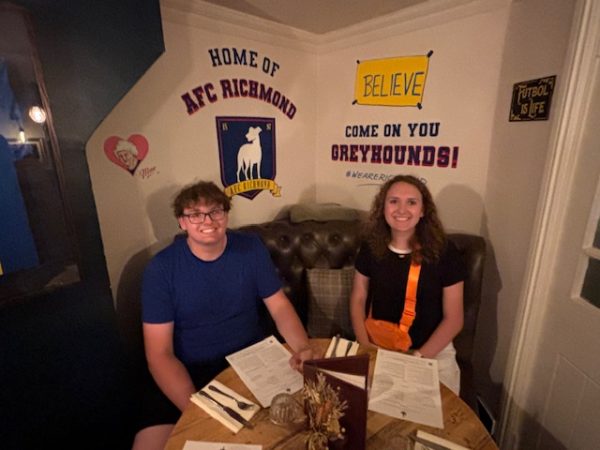Waddle Wonderland
Newest addition puts Detroit Zoo on map for having world’s largest penguin conservation center
Roll out the blue carpet and get the cameras ready. The penguins have arrived.
The Polk Penguin Conservation Center is one of the biggest and most extraordinary penguin exhibits in the world, and it is right here in Michigan. An exceptionally large upgrade from the strong stench of the past penguinarium, it reaches new depths with a 25-foot-deep aquatic area being home to four penguin species, more than 80 penguins over all.
“It’s awesome. It’s really cool if you have ever been in the old penguinarium; it stunk so bad; this one smells beautiful,” principal Tom Lietz said. “It is similar to the arctic ring of life and has the same feel to it, but they also added a 4D component designed to look like [Sir Ernest Shackleton’s] ship.”
The conservation center has many new features like the four-dimensional theater portraying Shackleton’s Antarctic expeditions and crossings of the Drake Passage with port hole views of other oceanic creature. Guests get the feeling of walking on the deck of a ship then slowly walking down to the under area of the boat only to enter a tunnel of water and swimming penguins.
“One of my favorite parts was the realistic theater that simulated a ship,” senior Austin Wiese said. “My all-time favorite had to be walking under the water, through the tunnels, and seeing the penguins swim above and around us.”
Aside from being a great attraction for guests with many opportunities to see the penguins and interactive areas, the conservation center was built with penguin care being top priority. The exhibit is big and natural enough to ensure the penguins comfort as well as encouraging wild behavior by giving them enough room for diving, purposing, and nesting young.
“I really enjoyed seeing how comfortable the penguins were in their new environment,” senior Selena Nissan said. “When I went, they were just playing and swimming with each other.”
The exhibit was built with the idea of everything green in mind; the architects have used recycled materials, low flow fixtures, and even daylight harvesting which lessens the amount of artificial light thereby lessening energy usage.
“If you go to the Detroit Zoo, you cannot avoid seeing examples about being more green,” Lietz said. “They don’t sell bottled water there, you have to bring your own bottles or buy a refillable one. There are recycling bins next to every garbage bin; they have a whole campaign about saving water; there are compost stations where they then use the compost for energy. Instead of just throwing it in your face, they give examples and say, ‘Here’s a way you can do better’.”
A lot of the materials and advances they have made benefits the penguins in many ways as well: ‘bird-friendly’ lighting that protects the sight of migrating birds, a wonderful habitat design that helps the penguins maintain natural behavior, and constant recirculation of the water to create currents and save water. Katelyn Tremper
Katelyn Tremper
“The Detroit Zoo is a total natural habitat, so the animals aren’t [out in the open] all the time,” Lietz said. “With the penguin exhibit, there is no way you can’t see the penguins. It’s essentially a big tank, so there is no way you won’t be able to see the penguins. It’s big and natural enough to keep the penguins comfortable, but it also won’t anger any guests or disappoint.”
The Polk Penguin Conservation Center is also a great learning experience for all who visit. From hearing about the history of Shackleton and his trip in the arctic, to comparing different ice layers and learning about the effects of climate change, guests are able to build a bigger appreciation for wildlife and nature.
“I think the new penguinarium gives us a new understanding about the penguins and the world they came from,” senior Katelyn Tremper said. “In one area as the penguins swim by, different facts about them and the habitat that they’re in come up on the screen some how. So I think they do a good job about informing us about where they came from and how they live, essentially giving us a better understanding and building a better appreciation.”
When it came to building the exhibit, over 1,000 individuals, including consultants, architects, and tradesmen contributed. The design of the building is a very unique one as well. From the iceberg shape, to the iridescent paint and the outline of flags from 50 different countries pasted along the concrete benches on the outside, the exhibit is truly a work of art.
“These countries comprise the Antarctic Treaty System, which regulates international relations with respect to Antarctica, Earth’s only continent without a native human population,” The Detroit Zoo Polk Penguin Conservation Center website said. “The treaty, entering into force in 1961 and having 53 parties as of 2016, sets aside Antarctica as a scientific preserve, establishes freedom of scientific investigation and bans military activity on the continent.”
Lots of careful planning went into the conservation center, as well. Visits to Antarctica by key project leadership allowed them to observe and experience the living conditions of penguins. Ecologists and biologists also played a main role in the design and ultimate outcome of the exhibit.
“They spent years with the zoo staff, donors, animal experts, aquarium experts, heating and cooling consultants, and others to come up with a concept,” AIA Member Architect Joerg Hensel said. “Once the concept [was] done, [came] the laborious task of doing the construction drawings, which are the drawings showing all the people that will build the project, what materials to use, and where.”
The exhibit is now on a first-come, first-serve basis, and tickets with a time are sold along with a regular admission ticket. The zoo also maintained extended hours during the weekends of April 23-24, April 30-May 1, and May 7-8. Those who helped build the conservation center, their families, and zoo members were also able to walk through the exhibit a couple days before the public opening.
“There were quite a lot of people at the opening, mostly the contractors and their families,” Wiese said. “They did a really nice job of making the place comfortable for the penguins; they painted rocks to make it seem like ice and put in jets to keep the water constantly moving.”
People crowd the zoo every day from opening to closing. Ever since the Polk Penguin Conservation Center opened, the amount of guests has only increased.
“It seems like the penguin exhibit has always been crowded since it opened. I’ve gone multiple times already and it’s been crowded every time,” senior Anthony Clyne said. “My favorite part was watching them swim around and enjoy themselves in their new habitat.”
Your donation will support the student journalists of Utica High School. The Arrow appreciates your help to keep us up and running.












